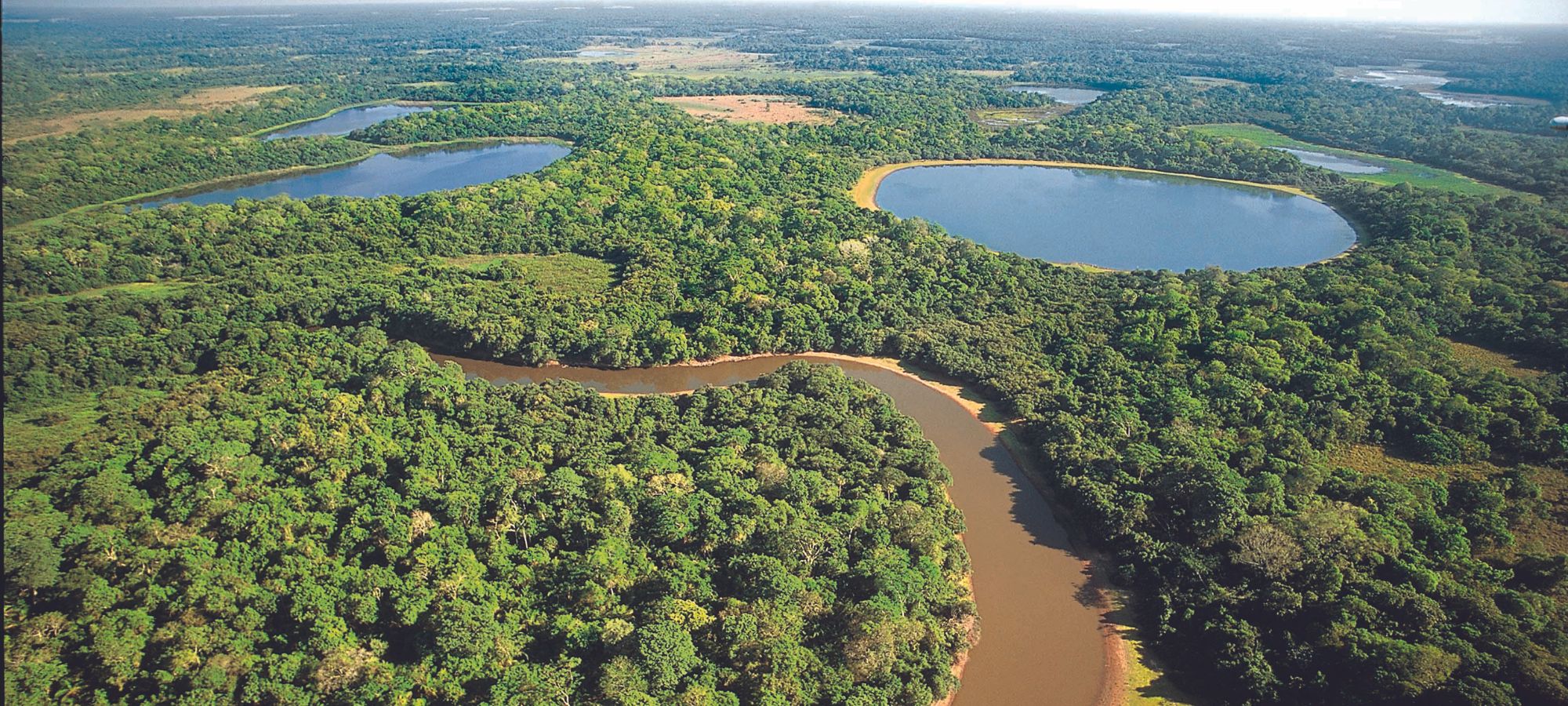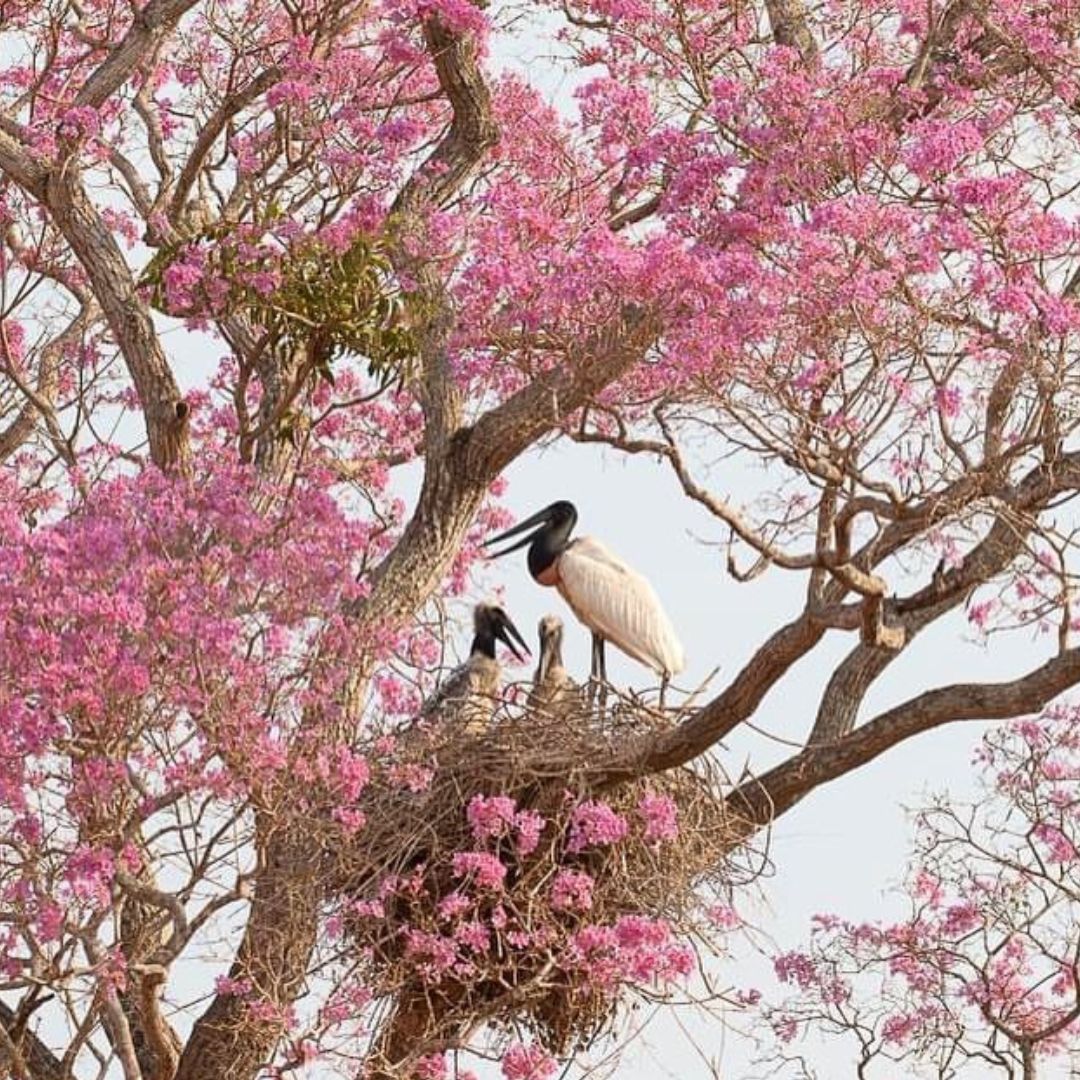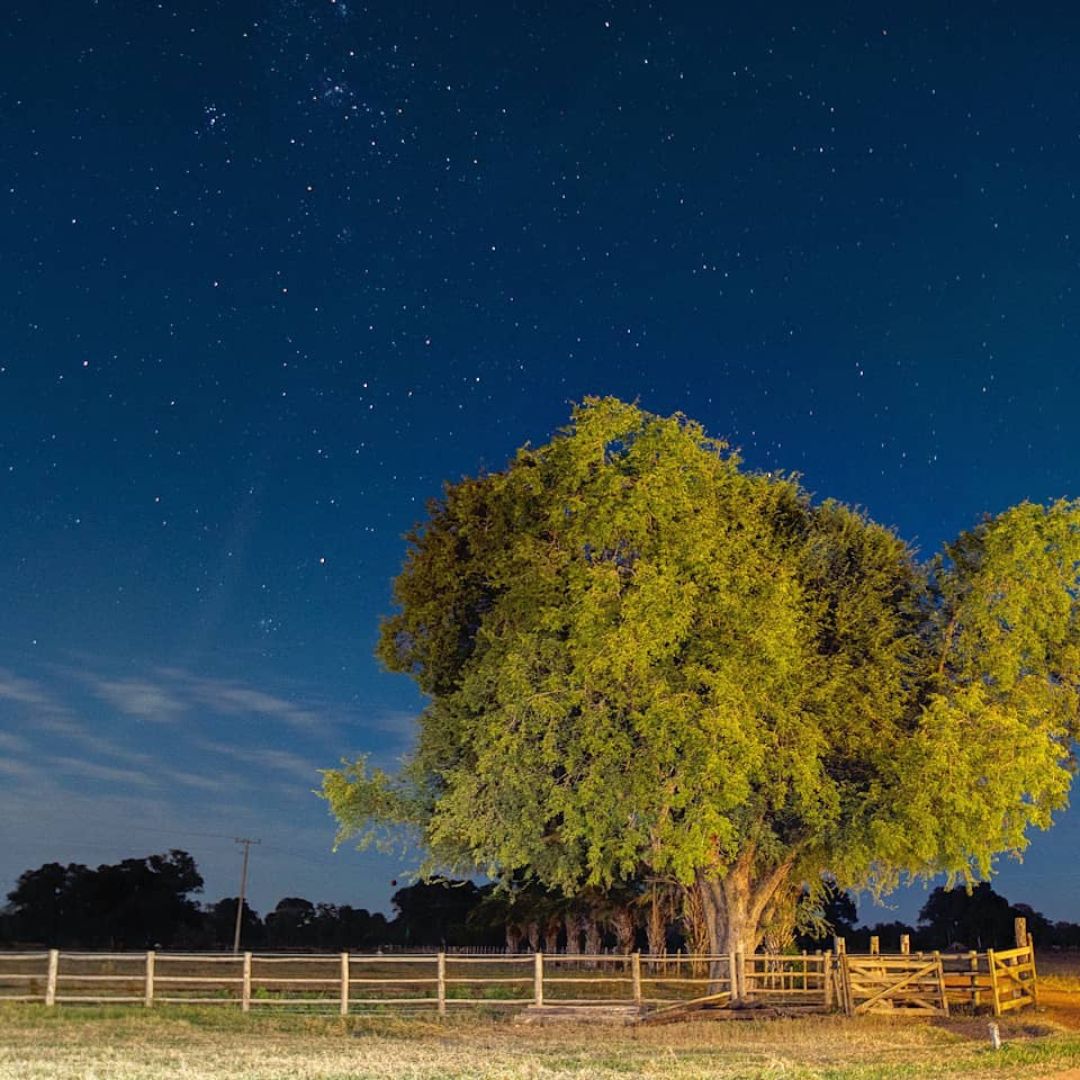The best time to visit the Pantanal is from May to October, covering the intermediate and dry seasons.
This period is ideal for wildlife spotting and outdoor activities. However, the Pantanal can be visited year-round! Its seasons present different opportunities for tours and activities, each bringing unique changes to the landscape.
As with other seasonal wetlands around the world, the annual rise and fall of water in the Pantanal provides the foundation for its ecological system. The region’s climate and wildlife behaviour are influenced by these seasons. Due to climate change, the seasons are becoming more unpredictable, which can cause variations in the forecasts. This ensures that no matter when you visit, the Pantanal tours offer their own set of remarkable experiences.

Discover the heart of South America in the wild expanse of the Pantanal. – Photo: Felipe Castellari
The Seasons and the Weather in Pantanal Brazil
The Pantanal has four well-defined main seasons: the wet season, intermediate season, dry season, and the rainy season.
Due to its location in the Brazilian Plateau Region in South America, temperatures in the Pantanal remain relatively consistent year-round, averaging 27°C (80°F). In this guide, we’ll explain the differences between each season and the best time to visit the Pantanal.
Pantanal Rainy Season (November and December)
The rainy season begins in November and lasts until December, bringing the first rains and transforming the landscape into a vibrant green. This season marks the start of the regeneration cycle, with the flora growing and wildlife beginning to spread out again. The abundant food sources draw in hundreds of bird species, taking advantage of the opportunity to teach their young how to fly. Many flocks of macaws and storks can be spotted. However, sightings of mammals have become less frequent.
The average temperature during the rainy season ranges from 23°C to 28°C (73°F to 82°F), with increasing humidity as the rains commence.
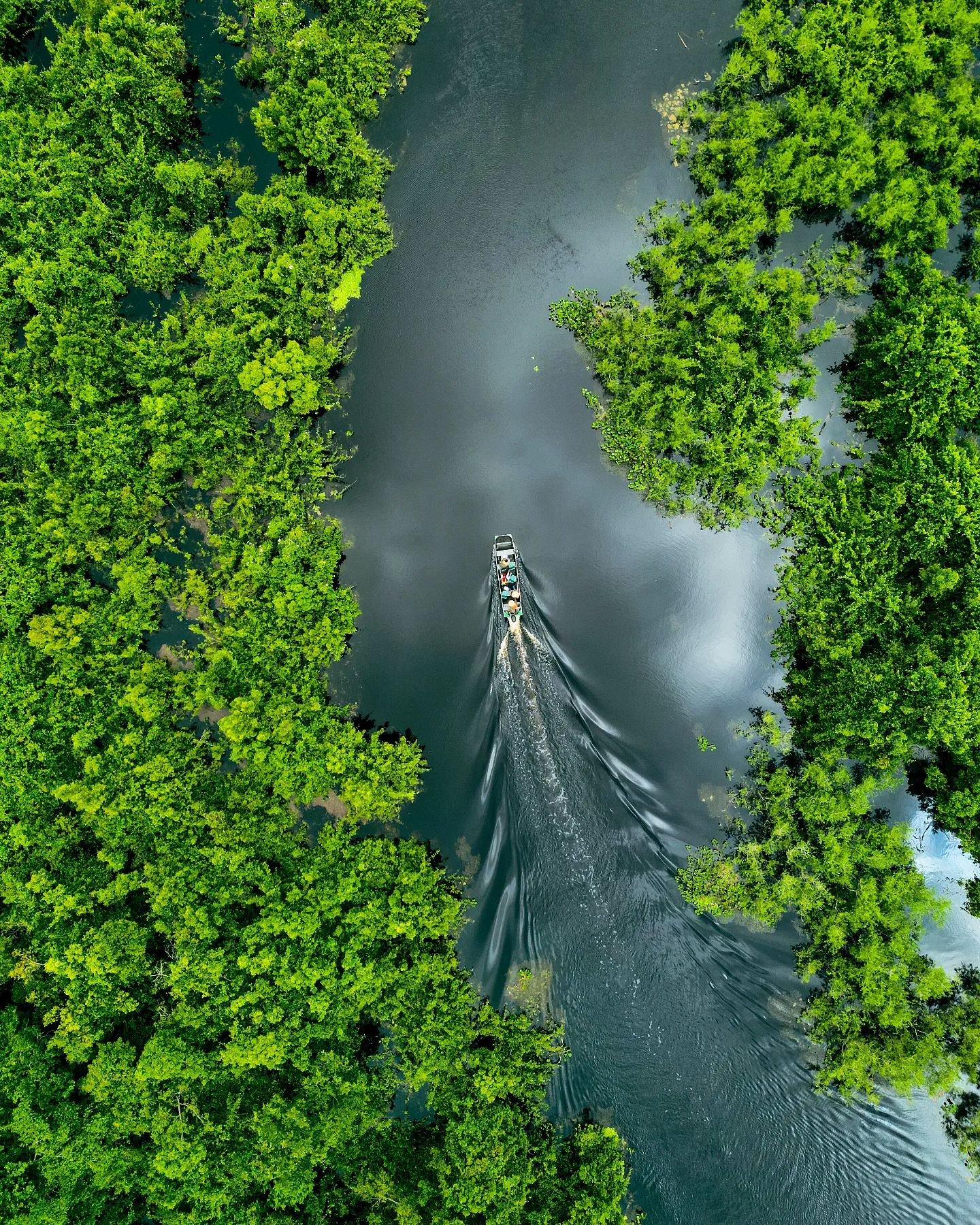
A biodiversity hotspot, the Pantanal is home to the highest concentration of wildlife in South America.
Pantanal Wet Season (December to March)
The wet season in Pantanal, from December to March, is also characterized by rainfall. During this period, the plains flood and the rivers overflow, creating a vast aquatic environment. January and February are the months with most rainfalls during the wet season, making the landscape even more dynamic and lush. This season is ideal for exploring the Pantanal by boat, as waterways expand and offer access to remote areas. Wildlife, including caimans, capybaras, and birds, thrive in this environment. However, access to some areas may be limited due to high water levels.
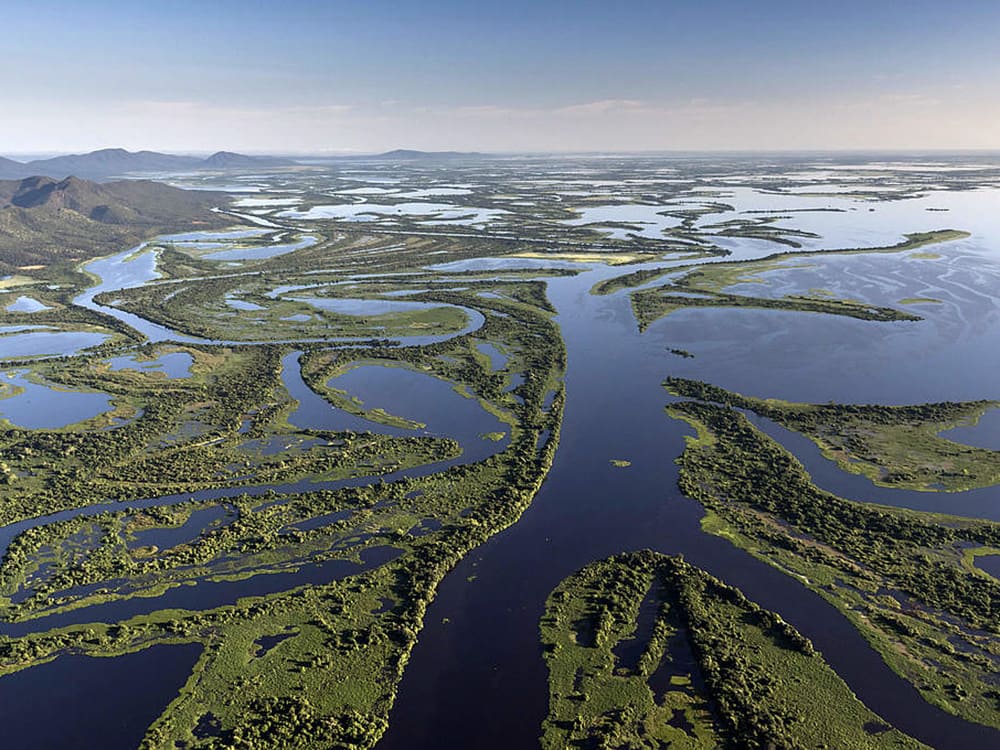
The Pantanal is the largest floodplain in the world!
The average temperature during the wet season ranges from 24°C to 29°C (75°F to 84°F), with high humidity.

The high waters form unique and stunning scenery. – Photo: Felipe Castellari
Pantanal Intermediate Season (April to June)
From April to June, the intermediate season marks the transition from the wet to the dry season. The water levels start to drop, exposing more land and the animals that had scattered with the flood return to the plain once again. This period is excellent for birdwatching, as many species gather in the remaining waters. The landscape begins to dry, but the vegetation remains lush and green, offering a beautiful contrast. In April, the sky presents the most starry nights of the Pantanal, and with the end of the rains comes mild weather that makes the night tours more delightful. By May, the weather is consistently mild, making daytime explorations particularly pleasant.
Average temperatures during this season range from 22°C to 27°C (72°F to 81°F), providing a slightly fresh and more comfortable climate for exploration.
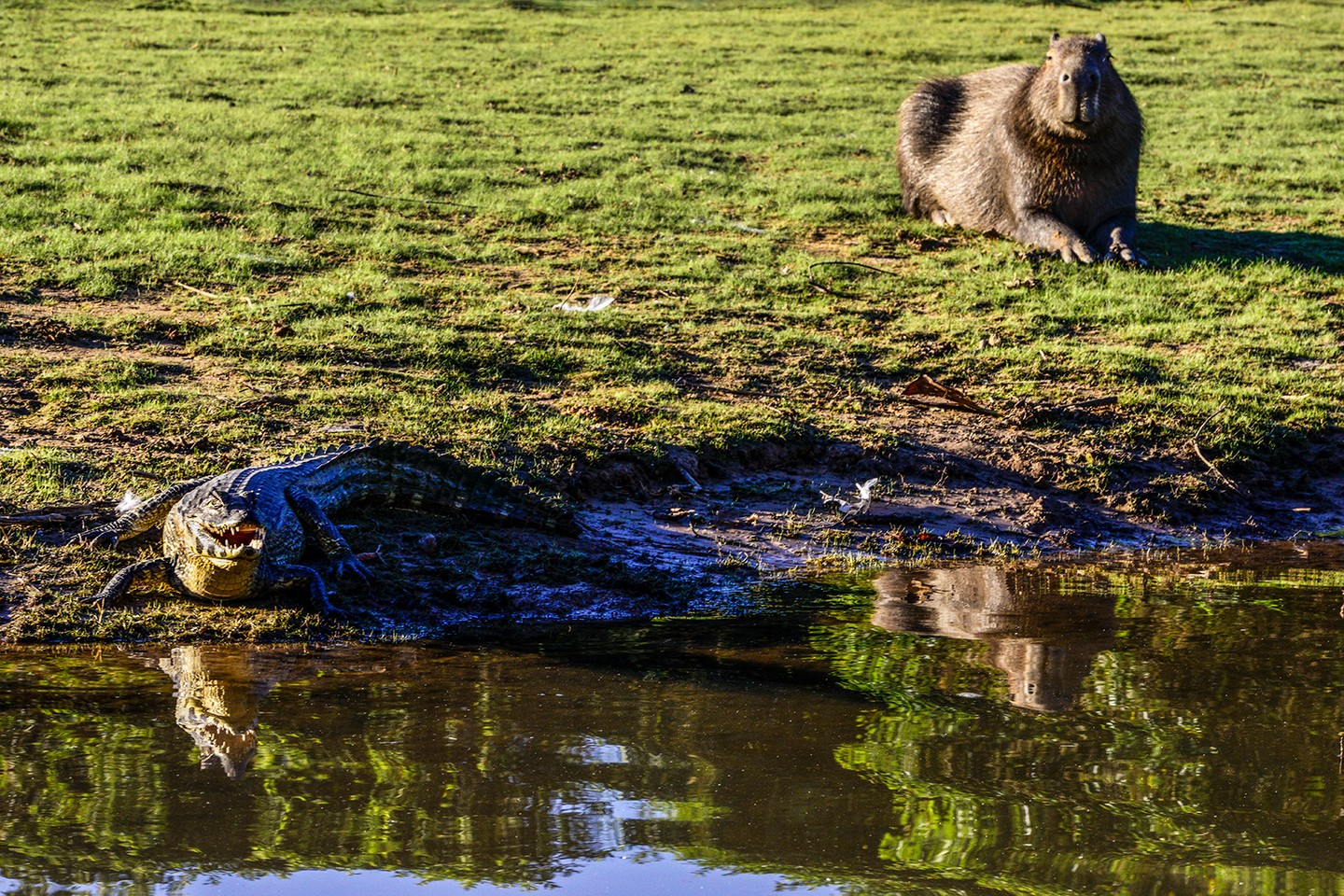
Animals return to concentrate on river banks during the intermediate season.
Pantanal Dry Season (July to October)
The dry season, spanning from July to October, is arguably the best time for wildlife viewing, so it’s the perfect season to visit the Pantanal. As water sources diminish, animals tend to cluster around the remaining watering holes, making them easier to spot. August, in particular, is known for its clear skies and dry conditions, making it ideal for safaris and photographic tours. It’s also a great time for horseback riding and walking tours, as the dry paths make exploration more accessible.

Go to the Pantanal and unwind in nature! – Photo: SM
The average temperature during the dry season ranges from 20°C to 26°C (68°F to 79°F), making it the most pleasant season for outdoor activities.

Experience a traditional and immersive way to see the Pantanal landscape. – Photo: Layla Motta
When is the best time to see Jaguars?
In the northern Pantanal, the best place in the world to spot jaguars, animals begin to concentrate on the riverbanks as the water level starts to drop between the intermediate season from May to June and continue to gather until October during the dry season. This significantly increases the chances of seeing them, making this period the best time to see jaguars in the Pantanal. Visitors can enjoy unforgettable moments on boat safaris in Porto Jofre, watching these magnificent creatures in their natural habitat.

Support conservation and experience the local culture of Pantanal! – Photo: @stoppila
However, in the southern Pantanal, there is a hidden gem—an ecological refuge for these felines. Here, visitors can see jaguars at any time of the year, regardless of the season, as they are protected in the reserve and accustomed to the presence of humans. Safaris are done by 4×4 vehicles, providing an exciting and immersive experience.

Stay on eco-friendly farms that blend conservation with adventure. – Photo: @edu.fragoso_
What is the current weather in the northern Pantanal?
Take a look at how the weather is right now in Porto Jofre, Mato Grosso.
What is the current weather in the southern Pantanal?
Take a look at how the weather is right now in Miranda, Mato Grosso do Sul.
Ready to discover the Pantanal?
Now that you know when is the best time to visit the Pantanal, let PlanetaEXO guide you through the rest of your adventure. Join one of our wildlife safaris and be impressed by this wonderful destination! Discover more and book your safari adventure on our Pantanal tours page.
Read more:

